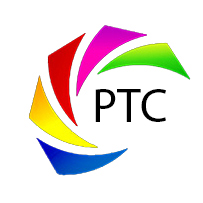A white laser is the most common and popular form of laser-excited phosphor (LEP) technology on the market today. LEP light (from LEP flashlights or automotive headlights, for example) is a novel solid-state lighting technology that can be more useful compared to LEDs in applications requiring accurate beam steering and long-range light projection. An LEP light source generally works by focusing a blue (or violet) laser on a phosphor element mounted on a heat sink. The laser can be either reflected off the surface or transmitted through the phosphor and down-converted to narrow or broad-spectrum light.
The optical design and choice of lasers and phosphors depend on the spectral properties and desired colors and brightness levels. In a typical white laser flashlight, a broadband yellow phosphor is used to produce a narrow white light beam that can be projected over long distances. The white color is generated by combining the yellow emission from the phosphor with the blue laser light.
In an LEP system, luminance in a given direction can be easily controlled. White laser headlamp technology is better positioned to take advantage of the recent advancements in artificial intelligence or AI. As laser beam steering algorithms continue to improve, AI will help determine the optimal direction (and luminance) needed to aim a vehicle’s headlights based on real-time data like steering angle, vehicle speed, road curvature, traffic, etc. This will allow the LEP white laser light beams to dynamically adjust and illuminate the road ahead more effectively, and to avoid blinding incoming traffic and pedestrians.
While blue to white LEP is the most common currently, a wide range of spectral colors (visible and/or infrared) can be achieved with this technology using specialty high power phosphor materials and advanced ceramic/glass composite systems.

White laser headlamps for automotive applications are an example of laser-excited phosphor (LEP) technology where a blue laser is converted to white using advanced photonic phosphors.
